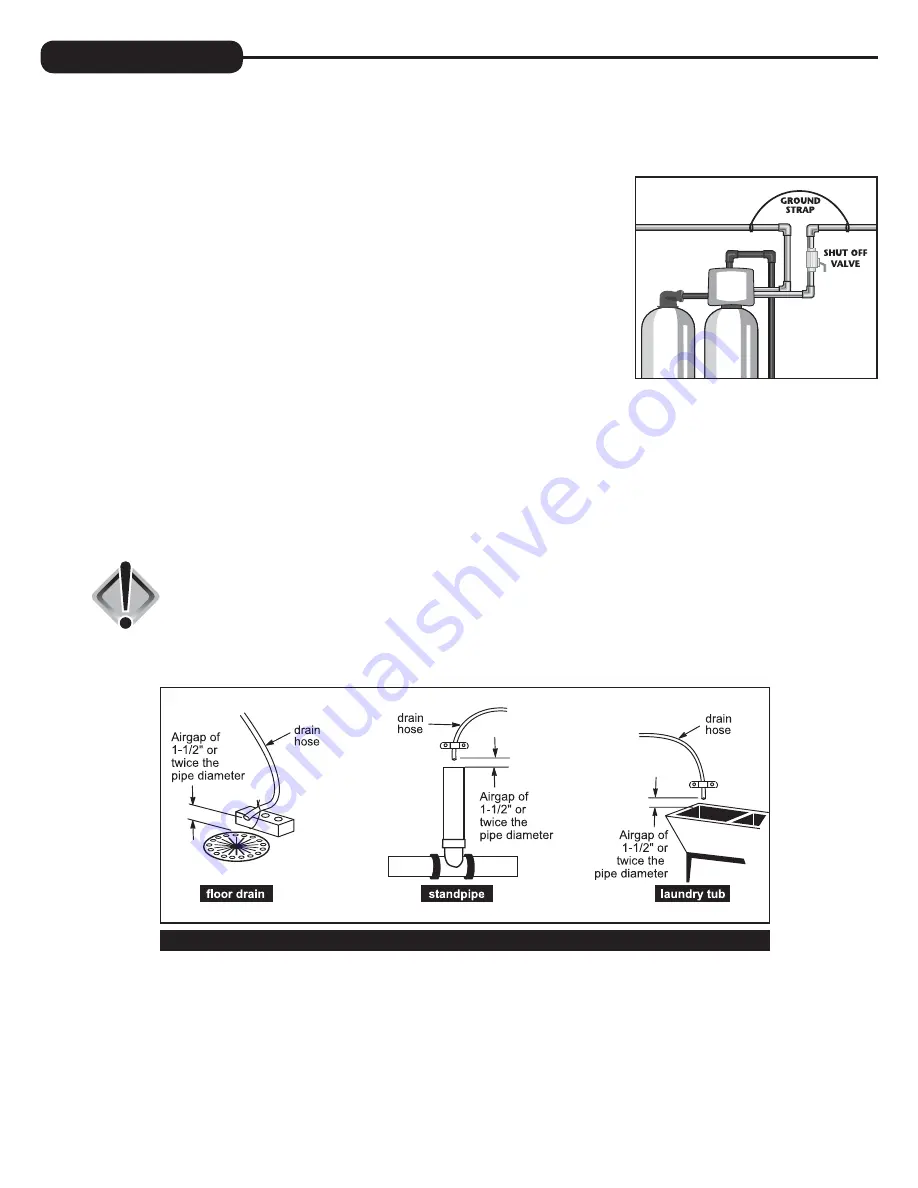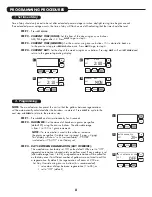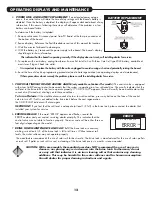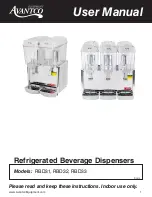
6
Ring . Solder joints should be cool and solvent cements should be set before installing the nut, split ring and “O” Ring .
Avoid getting solder flux, primer, and solvent cement on any part of the “O” Rings, split rings, bypass valve or control
valve . If the building’s electrical system is grounded to the plumbing, install a copper grounding strap from the inlet to the
outlet pipe . Plumbing must be done in accordance with all applicable local codes .
7 .
INSTALLING GROUND:
To maintain an electrical ground in metal plumbing of
a home’s cold water piping (such as a copper plumbing system), install a ground
clamp or jumper wiring .
NOTE:
If replacing an existing softener, also replace the ground clamps/wire . If
removing a softener, replace the piping with the same type of piping as the original
to assure plumbing integrity and grounding .
8 .
DRAIN LINE:
First, be sure that the drain can handle the backwash rate of the
system . Solder joints near the drain must be done prior to connecting the drain line
flow control fitting . Leave at least 6” between the drain line flow control fitting and
solder joints . Failure to do this could cause interior damage to the flow control . Install
a 1/2” I .D . flexible plastic tube to the Drain Line Assembly or discard the tubing nut
and use the 3/4” NPT fitting for rigid pipe (recommended) .
If the backwash rate is greater than 7 gpm, use a 3/4” rigid drain line.
Where the drain line is elevated but
empties into a drain below the level of the control valve, form a 7” loop at the discharge end of the line so that the bottom
of the loop is level with the drain connection on the control valve . This will provide an adequate anti-siphon trap . Piping the
drain line overhead <10 ft . is normally not a problem . Be sure adequate pressure is available (40-60 psi is recommended) .
Where the drain empties into an overhead sewer line, a sink-type trap must be used . Run drain tube to its discharge point in
accordance with plumbing codes . Pay special attention to codes for air gaps and anti-siphon devices .
NOTE:
Drain line nut will not be supplied for units having a backwash rate greater than 7 gpm .
CAUTION:
Never insert a drain line into a drain, sewer line, or trap. Always allow an
air gap of 1-1/2” or twice the pipe diameter, whichever is greater, between
the drain line and the wastewater to prevent the possibility of sewage being
back-siphoned into the softener.
TYPICAL DRAIN LINE INSTALLATIONS
INSTALLATION
Summary of Contents for Impression Plus IMP-1044TW
Page 22: ...22 REPLACEMENT PARTS...







































